
Asian Pacific Journal of Reproduction
Scope & Guideline
Bridging Gaps in Reproductive Knowledge
Introduction
Aims and Scopes
- Reproductive Health Research:
Focuses on understanding various aspects of reproductive health, including infertility, pregnancy complications, and reproductive disorders, through empirical studies and systematic reviews. - Animal Reproductive Biology:
Investigates reproductive physiology, pathology, and interventions in various animal species, contributing to better practices in veterinary medicine and livestock management. - Impact of Environmental Factors:
Explores how environmental stressors, such as pollutants and climate change, affect reproductive health in both humans and animals, highlighting the importance of environmental stewardship. - Innovative Therapeutic Approaches:
Promotes research on novel treatments and interventions for improving reproductive outcomes, including pharmacological, dietary, and technological advancements. - Public Health and Education:
Examines the intersection of reproductive health with public health initiatives, focusing on awareness, education, and access to reproductive health services. - Genetic and Molecular Studies:
Encourages studies on the genetic and molecular basis of reproductive health, including the role of genes and biomarkers in fertility and reproductive disorders.
Trending and Emerging
- Impact of COVID-19 on Reproductive Health:
Research addressing the effects of the COVID-19 pandemic on fertility, pregnancy outcomes, and reproductive health practices has surged, highlighting the pandemic's pervasive influence on health systems. - Psychosocial Factors in Infertility:
There is an increasing focus on the psychosocial aspects of infertility, including mental health interventions for couples facing reproductive challenges, signaling recognition of the emotional dimensions of reproductive health. - Sustainable Practices in Reproductive Health:
Emerging studies emphasize sustainable and eco-friendly practices in reproductive health, including the use of natural products and environmentally safe interventions. - Technological Advances in Reproductive Medicine:
The integration of advanced technologies, such as artificial intelligence and telemedicine, into reproductive health practices is gaining traction, reflecting the need for innovative solutions. - Nutritional and Lifestyle Interventions:
Research on the role of nutrition and lifestyle factors in enhancing reproductive health outcomes is on the rise, indicating a holistic approach to fertility and reproductive wellness. - Genomic and Epigenetic Research:
There is a growing interest in the role of genomic and epigenetic factors in reproductive health, enhancing understanding of fertility and reproductive disorders at the molecular level.
Declining or Waning
- Traditional Herbal Remedies:
Research on the efficacy of traditional herbal treatments for reproductive health has seen a decline, possibly due to increasing focus on evidence-based medicine and pharmacological approaches. - Basic Reproductive Physiology Studies:
There is a noticeable reduction in publications focusing solely on basic physiological mechanisms of reproduction, as the field moves towards applied research and clinical relevance. - Non-Clinical Animal Studies:
The journal has seen fewer papers dedicated to non-clinical studies in animal models, as there is a growing emphasis on translational research that directly informs human reproductive health. - Single-Species Studies:
Research focusing on single species in isolation is becoming less common, with a trend towards comparative studies across multiple species to gain more comprehensive insights. - Historical Perspectives on Reproductive Health:
Papers exploring historical contexts or traditional practices in reproductive health are declining, as the current focus shifts towards contemporary challenges and innovations.
Similar Journals
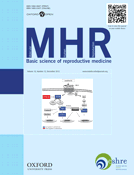
MOLECULAR HUMAN REPRODUCTION
Exploring the Molecular Frontiers of Human ReproductionMOLECULAR HUMAN REPRODUCTION, published by Oxford University Press, is a pivotal journal dedicated to advancing the field of reproductive biology. Since its inception in 1995, the journal has been recognized for its rigorous peer-reviewed research and substantial contributions to the understanding of molecular mechanisms underlying human reproduction. With an impressive impact factor and ranked within the top tiers (Q1 and Q2) across diverse categories including Embryology, Obstetrics and Gynecology, and Reproductive Medicine, it stands as an essential resource for researchers, healthcare professionals, and students alike. The journal aims to publish cutting-edge research that explores the complexities of human reproduction at the molecular and cellular levels, fostering a deeper understanding that can be translated into clinical practice. Although it currently operates under a subscription model, the valuable insights and groundbreaking findings featured within its pages continue to influence the trajectory of reproductive health research globally. Located in the heart of Oxford, United Kingdom, the journal remains committed to addressing vital challenges in the field and promoting innovative scientific dialogue.
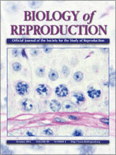
BIOLOGY OF REPRODUCTION
Exploring Innovations in Reproductive BiologyBIOLOGY OF REPRODUCTION is a premier journal published by Oxford University Press Inc, dedicated to advancing research in the fields of reproductive biology, cell biology, and reproductive medicine. With an impressive impact factor and a strong ranking as Q1 in reproductive medicine and miscellaneous medicine, as well as Q2 in cell biology, this journal offers a vital platform for disseminating innovative findings and pivotal studies that shape our understanding of reproductive processes. Since its inception in 1969, BIOLOGY OF REPRODUCTION has become a key resource for scientists, clinicians, and students alike, providing insights that drive the future of reproductive health and research. Although not an open-access publication, it remains a respected authority, reflecting a commitment to high-quality peer-reviewed articles. The journal's comprehensive scope includes molecular and cellular aspects of reproduction, reproductive health, and associated technologies, making it indispensable for professionals looking to stay at the forefront of breakthroughs within the field.

Reproductive Biology
Fostering Collaboration in Reproductive ResearchReproductive Biology is a premier academic journal published by Elsevier, dedicated to advancing the field of reproductive science. With an ISSN of 1642-431X and an E-ISSN of 2300-732X, this journal has been serving the scientific community since its inception in 2001. It notably holds a Q1 ranking in Animal Science and Zoology as of 2023, underscoring its significant impact and prominence in this domain. The journal encompasses a wide array of topics surrounding reproductive biology, including but not limited to endocrinology and developmental processes, making it an essential resource for researchers and practitioners. Although it operates under a traditional access model, its comprehensive scope offers valuable insights that contribute to advancements in reproductive health, animal conservation, and biotechnology. Published in the Netherlands, Reproductive Biology aims to foster interdisciplinary collaboration and innovation, ultimately enriching our understanding of reproductive mechanisms across various species. Researchers, professionals, and students alike will find this journal an indispensable platform for disseminating groundbreaking research and engaging with the latest findings in reproductive science.

HUMAN REPRODUCTION UPDATE
Your Gateway to Cutting-edge Reproductive ResearchHUMAN REPRODUCTION UPDATE, published by Oxford University Press, stands as a leading journal in the fields of Obstetrics and Gynecology and Reproductive Medicine. With an impressive Q1 ranking in both categories according to the 2023 category quartiles and a significant Scopus rank, it is recognized as one of the top journals globally in these disciplines, catering to the most relevant and cutting-edge research. The journal has been a crucial platform for disseminating vital findings and reviews from 1995 to 2024, contributing to advancements in human reproductive health. With its focus on publishing high-quality, peer-reviewed articles, it serves as an essential resource for researchers, healthcare professionals, and students seeking the latest insights and developments in reproductive science. As the journal aims to foster informed discussions and encourage further research, it remains committed to shaping the future of reproductive health and medicine.
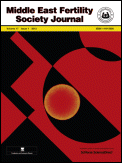
Middle East Fertility Society Journal
Transforming insights into impactful solutions for fertility.Middle East Fertility Society Journal is a premier open-access publication established in 1996 that caters to the fields of Obstetrics and Gynecology as well as Reproductive Medicine. Published by SPRINGER in Egypt, this journal has made significant strides in disseminating high-quality research and advancements in reproductive health, achieving a 2023 Scopus rank of #102 in Obstetrics and Gynecology and #47 in Reproductive Medicine, placing it in the 51st and 48th percentiles respectively. With an aim to foster collaboration and innovation in the fertility sector, it welcomes researchers and practitioners to share their findings and insights, contributing to the global discourse on reproductive issues. As an open-access journal since 2010, it ensures that the latest research is readily available to a broad audience, enhancing accessibility and knowledge transfer in the vital area of reproductive health.
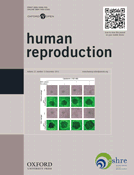
HUMAN REPRODUCTION
Transforming knowledge into practice in human reproduction.HUMAN REPRODUCTION is a prestigious academic journal published by Oxford University Press, dedicated to advancing the field of reproductive medicine. With an impressive impact factor highlighting its significance, the journal ranks in the top quartile (Q1) for Obstetrics and Gynecology, Rehabilitation, and Reproductive Medicine, showcasing its crucial role in disseminating high-quality research. Founded in 1986, it has become a key resource for researchers, practitioners, and students interested in cutting-edge developments and innovative practices in human reproduction. Despite not currently offering open access, the journal continues to publish a wealth of peer-reviewed articles that contribute substantially to clinical knowledge and practice. With Scopus rankings placing it among the top journals in its categories, HUMAN REPRODUCTION remains an essential platform for discussion and dissemination of vital findings impacting reproductive health globally.

Clinical and Experimental Reproductive Medicine-CERM
Advancing Reproductive Health Through Innovative ResearchClinical and Experimental Reproductive Medicine (CERM) is a premier journal dedicated to advancing the field of reproductive medicine. Published by the Korean Society of Reproductive Medicine, it aims to disseminate high-quality research and innovative clinical practices in reproductive health and medicine. With its Q3 ranking in reproductive medicine for 2023, CERM is positioned as a significant resource for researchers and practitioners seeking to stay current with the latest developments and findings in the field. Since its inception in 2011, CERM has provided a vital platform for original research articles, review papers, and case studies that cover a range of topics, including fertility treatments, reproductive endocrinology, and embryology. Researchers benefit from its accessibility, inspiring new insights and evidence-based approaches to clinical practices. Based in South Korea, its rigorous peer-reviewed publication process ensures that all contributions meet high academic standards, making it an invaluable asset for anyone engaged in reproductive health research or practice.

Reproductive Medicine and Biology
Exploring breakthroughs in reproductive science.Reproductive Medicine and Biology, an esteemed journal published by WILEY, stands at the forefront of advancements in the field of reproductive health and associated biological sciences. With an impact factor that underscores its relevance—ranking in Q1 for Reproductive Medicine and Q3 in Cell Biology—this journal is distinguished by its commitment to disseminating high-quality, peer-reviewed research since its transition to Open Access in 2002. Based in Japan, the journal caters to a global audience, providing vital insights into reproductive biology, therapeutics, and innovative practices. With Scopus rankings placing it at #22 out of 90 in Reproductive Medicine and a commendable percentile ranking, Reproductive Medicine and Biology aims to foster dialogue and knowledge transfer among researchers, professionals, and students, paving the way for breakthroughs in understanding reproductive health.
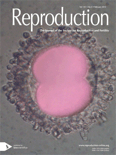
REPRODUCTION
Elevating the discourse in reproductive and developmental studies.REPRODUCTION, published by BIOSCIENTIFICA LTD, stands at the forefront of research in the fields of reproductive and developmental biology. With a focus on advancing our understanding of reproductive health and mechanisms, the journal has garnered an impressive reputation, consistently ranking in the first quartile for key categories including Embryology, Endocrinology, Obstetrics and Gynecology, and Reproductive Medicine in 2023. Notably, it holds an esteemed position in the Scopus rankings, with high percentiles that reflect its significant impact in the scientific community. The journal is committed to open access, promoting the broad dissemination of high-quality research to facilitate innovative discoveries and interdisciplinary collaboration. Situated in the United Kingdom, REPRODUCTION serves as a vital resource for researchers, professionals, and students eager to contribute to the evolving landscape of reproductive sciences and related fields.

THERIOGENOLOGY
Pioneering knowledge in veterinary reproduction since 1974.THERIOGENOLOGY is a prestigious academic journal published by Elsevier Science Inc, dedicated to the field of veterinary reproduction and animal science. With an impressive impact factor and recognized as a Q1 journal in various categories including Animal Science and Zoology, Equine, Food Animals, and Small Animals, THERIOGENOLOGY has established itself as a vital resource for researchers, practitioners, and students alike. Founded in 1974, the journal covers a broad spectrum of topics related to reproductive physiology, biotechnology, and the health management of food and companion animals. Although it does not currently offer open access, researchers can benefit from its comprehensive articles and reviews that push the boundaries of knowledge in veterinary science. With a significant placement in the Scopus rankings, ranking #1 in multiple veterinary categories, THERIOGENOLOGY serves as an essential platform for advancing the understanding of reproductive strategies and practices, thereby contributing directly to the fields of animal husbandry and veterinary medicine.